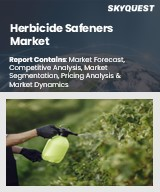
|
시장보고서
상품코드
1570830
세계의 아닐로포스 시장 : 작물 유형, 제제, 작용기전, 최종 사용자, 용도별 예측(2025-2030년)Anilofos Market by Crop Type (Cereals, Fruits, Vegetables), Formulation (Granular, Liquid, Powder), Mode Of Action, End User, Application - Global Forecast 2025-2030 |
||||||
아닐로포스 시장은 2023년에 6억 3,457만 달러로 평가되었고, 2024년에는 6억 6,165만 달러에 도달할 것으로 예측되며, CAGR 4.86%로 성장하여 2030년에는 8억 8,501만 달러에 이를 것으로 예측됩니다.
아닐로포스는 벼농사에서 다양한 잡초 종을 관리하는 데 주로 사용되는 선택적인 이삭 전 제초제입니다. 그 효과적인 작용은 주로 식물의 성장에 중요한 아미노산의 합성을 저해하는 것에 근거하기 때문에 농업 분야에서의 필요성과 응용이 기대되고 있습니다. 아닐로포스의 최종 용도 범위는 주식으로 쌀에 크게 의존하는 농경사회, 특히 쌀 생산이 활발한 아시아 국가들이 중심입니다. 이 시장의 성장은 세계의 식량 수요 증가, 농업 기술의 진보, 지속 가능한 농업을 추구하는 목소리 증가에 크게 영향을 받고 있습니다. 게다가 작물의 수율과 품질을 향상시키기 위한 농약의 채용이 급증하고 있는 것도 시장 확대를 크게 뒷받침하고 있습니다. 그러나 환경 규제 증가와 유기농 농산물에 대한 소비자의 취향에 대응하는 바이오 대체 농약의 개량 및 개발에는 잠재적인 비즈니스 기회가 있습니다. 독성 잔류물을 줄이고 선택성을 높이기 위한 R&D 투자도 새로운 길을 열 수 있습니다. 그럼에도 불구하고 시장은 엄격한 규제 프레임 워크, 대상 잡초 종의 저항성, 환경 문제 등의 제약에 직면하고 있으며, 아닐로포스의 광범위한 채용과 응용이 과제가되고 있습니다. 생태학적 기법을 중시하는 병충해 종합 관리 시스템의 시작은 화학물질 기반 솔루션에 대한 경쟁적인 과제가 되고 있습니다. 기술 혁신과 연구를 위한 최선의 분야로는 보다 비용 효율적이고, 환경 친화적인 제초액의 조제나, 환경에 대한 영향을 최소한으로 억제하는 정밀 살포를 위한 디지털 기술의 도입을 들 수 있다 합니다. 이러한 혁신은 생산성과 함께 지속가능성을 더욱 중시하는 시장에 호소할 것으로 보입니다.결국 아닐로포스 시장은 효과적인 해충 관리의 필요성과 지속가능하고 환경친화적인 농업 관행의 필요성 사이의 균형을 반영하고 있으며, 미래 성장은 환경 스튜어드십에 따른 혁신에 걸리고 있음을 시사합니다. 스마트 농업 솔루션을 위한 기술 기업과의 제휴를 모색하는 것도 전략적인 일수가 되어, 진화하는 농업 동향 속에서 시장의 포지셔닝을 강화할 수 있다고 생각됩니다.
| 주요 시장 통계 | |
|---|---|
| 기준년(2023) | 6억 3,457만 달러 |
| 예측년(2024) | 6억 6,165만 달러 |
| 예측년(2030) | 8억 8,501만 달러 |
| CAGR(%) | 4.86% |
시장 역학: 빠르게 진화하는 아닐로포스 시장의 주요 시장 인사이트 공개
아닐로포스 시장은 수요 및 공급의 역동적인 상호작용에 의해 변모하고 있습니다. 이러한 시장 역학의 진화를 이해함으로써 기업은 충분한 정보를 바탕으로 투자결정, 전략적 의사결정, 새로운 비즈니스 기회를 획득할 수 있습니다. 이러한 동향을 종합적으로 파악함으로써 기업은 정치적, 지리적, 기술적, 사회적, 경제적 영역에 걸친 다양한 리스크를 경감할 수 있을 뿐만 아니라, 소비자 행동과 그것이 제조 비용 또는 구매 동향에 미치는 영향을보다 명확하게 이해할 수 있습니다.
- 시장 성장 촉진요인
- 농가에 있어서의 제초제에 대한 의식의 고조
- 농업 부문의 확대는 효과적인 잡초 방제 솔루션의 필요성을 증가시키고 있습니다.
- 기후 변화가 잡초의 생육 패턴에 영향을 주어, 적을 짜낸 제초제의 사용이 필요
- 시장 성장 억제요인
- 제약 업계의 규제상의 장애물과 규정 준수 문제
- 시장 기회
- 정밀 농업과 첨단 농약의 도입을 향한 동향 증가
- 친환경 제제 개발
- 시장의 과제
- 잡초의 저항성 발달에 관한 문제
Portre's Five Forces: 아닐로포스 시장을 탐색하는 전략 도구
Porter's Five Forces 프레임 워크는 시장 상황경쟁 구도를 이해하는 중요한 도구입니다. Porter's Five Force Framework는 기업의 경쟁력을 평가하고 전략적 기회를 탐구하는 명확한 기술을 제공합니다. 이 프레임워크는 기업이 시장 내 세력도를 평가하고 신규 사업의 수익성을 판단하는 데 도움이 됩니다. 이러한 통찰을 통해 기업은 자사의 강점을 활용하고 약점을 해결하고 잠재적인 과제를 피함으로써 보다 강인한 시장에서의 포지셔닝을 확보할 수 있습니다.
PESTLE 분석 : 아닐로포스 시장에서 외부 영향을 파악
외부 거시 환경 요인은 Anilophos 시장의 성과 역학을 형성하는데 매우 중요한 역할을합니다. 정치적, 경제적, 사회적, 기술적, 법적, 환경적 요인 분석은 이러한 영향을 탐색하는 데 필요한 정보를 제공합니다. PESTLE 요인을 조사함으로써 기업은 잠재적인 위험과 기회를 더 잘 이해할 수 있습니다. 이 분석을 통해 기업은 규제, 소비자 선호, 경제 동향의 변화를 예측하고 앞으로 예상되는 적극적인 의사 결정을 할 준비를 할 수 있습니다.
시장 점유율 분석 : 아닐로포스 시장 경쟁 구도 파악
아닐로포스 시장의 상세한 시장 점유율 분석을 통해 공급업체의 성과를 종합적으로 평가할 수 있습니다. 기업은 수익, 고객 기반, 성장률 등 주요 지표를 비교하여 경쟁 포지셔닝을 밝힐 수 있습니다. 이 분석을 통해 시장 집중, 단편화, 통합 동향을 밝혀내고 벤더들은 경쟁이 치열해지는 가운데 자사의 지위를 높이는 전략적 의사 결정을 내리는 데 필요한 지식을 얻을 수 있습니다.
FPNV 포지셔닝 매트릭스 : 아닐로포스 시장에서 공급업체의 성능 평가
FPNV 포지셔닝 매트릭스는 아닐로포스 시장에서 공급업체를 평가하는 중요한 도구입니다. 이 행렬을 통해 비즈니스 조직은 공급업체의 비즈니스 전략과 제품 만족도를 기준으로 평가하여 목표에 맞는 충분한 정보를 바탕으로 의사 결정을 내릴 수 있습니다. 네 가지 사분면을 통해 공급업체를 명확하고 정확하게 세분화하여 전략 목표에 가장 적합한 파트너 및 솔루션을 파악할 수 있습니다.
전략 분석 및 추천 : 아닐로포스 시장에서 성공을 위한 길을 그리기
아닐로포스 시장의 전략 분석은 세계 시장에서의 존재를 강화하려는 기업에 필수적입니다. 주요 자원, 능력 및 성과 지표를 검토함으로써 기업은 성장 기회를 파악하고 개선을 위해 노력할 수 있습니다. 이러한 접근 방식을 통해 경쟁 구도에서 과제를 극복하고 새로운 비즈니스 기회를 활용하여 장기적인 성공을 거둘 수 있는 체제를 구축할 수 있습니다.
이 보고서는 주요 관심 분야를 포괄하는 시장의 종합적인 분석을 제공합니다.
1. 시장 침투: 현재 시장 환경의 상세한 검토, 주요 기업의 광범위한 데이터, 시장 도달범위 및 전반적인 영향력 평가.
2. 시장 개척도: 신흥 시장의 성장 기회를 파악하고 기존 분야의 확장 가능성을 평가하며 미래 성장을 위한 전략적 로드맵을 제공합니다.
3. 시장 다양화: 최근 제품 출시, 미개척 지역, 업계의 주요 진보, 시장을 형성하는 전략적 투자를 분석합니다.
4. 경쟁 평가 및 정보 : 경쟁 구도를 철저히 분석하여 시장 점유율, 사업 전략, 제품 포트폴리오, 인증, 규제 당국 승인, 특허 동향, 주요 기업의 기술 진보 등을 검증합니다.
5. 제품 개발 및 혁신 : 미래 시장 성장을 가속할 것으로 예상되는 최첨단 기술, R&D 활동, 제품 혁신을 강조합니다.
또한 이해관계자가 충분한 정보를 얻고 의사결정을 할 수 있도록 중요한 질문에 대답하고 있습니다.
1. 현재 시장 규모와 향후 성장 예측은?
2. 최고의 투자 기회를 제공하는 제품, 부문 및 지역은 어디입니까?
3. 시장을 형성하는 주요 기술 동향과 규제의 영향은?
4. 주요 벤더의 시장 점유율과 경쟁 포지션은?
5. 벤더 시장 진입·철수 전략의 원동력이 되는 수익원과 전략적 기회는 무엇인가?
목차
제1장 서문
제2장 조사 방법
제3장 주요 요약
제4장 시장 개요
제5장 시장 인사이트
- 시장 역학
- 성장 촉진요인
- 농가들 사이에서 제초제의 장점에 대한 의식이 높아진다
- 농업 분야의 확대에 의해 효과적인 잡초 방제 솔루션의 필요성이 높아지고 있다
- 기후 변화가 잡초의 성장 패턴에 영향을 주어, 표적 제초제의 사용이 필요하게 됨
- 억제요인
- 제약 업계의 규제상의 장애물 및 규정 준수 문제
- 기회
- 정밀농업과 선진농약 도입의 경향이 높아지고 있다
- 친환경 처방의 개발
- 과제
- 잡초의 내성 발달과 관련된 문제
- 성장 촉진요인
- 시장 세분화 분석
- Porter's Five Forces 분석
- PESTLE 분석
- 정치
- 경제
- 사교
- 기술
- 법률
- 환경
제6장 아닐로포스 시장 : 작물 유형별
- 곡물
- 쌀
- 밀
- 과일
- 사과
- 오렌지
- 야채
- 당근
- 토마토
제7장 아닐로포스 시장 처방별
- 입상
- 액체
- 분말
제8장 아닐로포스 시장 작용기전별
- 접촉
- 침투
제9장 아닐로포스 시장 : 최종 사용자별
- 농약회사
- 농민
제10장 아닐로포스 시장 : 용도별
- 발아 후
- 발아 전
제11장 아메리카 아닐로포스 시장
- 아르헨티나
- 브라질
- 캐나다
- 멕시코
- 미국
제12장 아시아태평양의 아닐로포스 시장
- 호주
- 중국
- 인도
- 인도네시아
- 일본
- 말레이시아
- 필리핀
- 싱가포르
- 한국
- 대만
- 태국
- 베트남
제13장 유럽·중동 및 아프리카의 아닐로포스 시장
- 덴마크
- 이집트
- 핀란드
- 프랑스
- 독일
- 이스라엘
- 이탈리아
- 네덜란드
- 나이지리아
- 노르웨이
- 폴란드
- 카타르
- 러시아
- 사우디아라비아
- 남아프리카
- 스페인
- 스웨덴
- 스위스
- 터키
- 아랍에미리트(UAE)
- 영국
제14장 경쟁 구도
- 시장 점유율 분석 2023
- FPNV 포지셔닝 매트릭스, 2023
- 경쟁 시나리오 분석
- 전략 분석과 제안
The Anilofos Market was valued at USD 634.57 million in 2023, expected to reach USD 661.65 million in 2024, and is projected to grow at a CAGR of 4.86%, to USD 885.01 million by 2030.
Anilofos is a selective, pre-emergence herbicide predominantly utilized in rice cultivation to manage various weed species. Its effective action is primarily based on inhibiting the synthesis of amino acids critical for plant growth, thus providing compelling necessity and application within the agricultural sector. The end-use scope of anilofos is predominantly within agrarian societies relying heavily on rice as a staple food, particularly across Asian countries where rice production is extensive. The market's growth is heavily influenced by rising global food demand, advancements in agricultural technologies, and the increasing call for sustainable farming practices. Additionally, a surge in agrochemical adoption to enhance crop yield and quality significantly drives expansion. However, potential opportunities lie in the refinement and development of bio-based anilofos alternatives, addressing growing environmental regulations and consumer preferences for organic produce. Investing in R&D to reduce toxic residues and enhance selectivity could also open new avenues. Nonetheless, the market faces limitations such as stringent regulatory frameworks, resistance in target weed species, and environmental concerns, which challenge the broader adoption and application of anilofos. The rising tide of integrated pest management systems, emphasizing ecological methods, poses a competitive challenge to chemical-based solutions. The best areas for innovation and research include the formulation of more cost-effective and environmentally benign herbicidal solutions and the incorporation of digital technologies for precision application to minimize environmental impact. These innovations would likely appeal to a market that increasingly values sustainability alongside productivity. Ultimately, the anilofos market reflects a balance between the necessity for effective pest management and the imperative for sustainable, eco-friendly agricultural practices, suggesting that future growth will hinge on innovation aligned with environmental stewardship. Exploring partnerships with technology firms for smart farming solutions could also be a strategic move, reinforcing market positioning amidst evolving agricultural trends.
| KEY MARKET STATISTICS | |
|---|---|
| Base Year [2023] | USD 634.57 million |
| Estimated Year [2024] | USD 661.65 million |
| Forecast Year [2030] | USD 885.01 million |
| CAGR (%) | 4.86% |
Market Dynamics: Unveiling Key Market Insights in the Rapidly Evolving Anilofos Market
The Anilofos Market is undergoing transformative changes driven by a dynamic interplay of supply and demand factors. Understanding these evolving market dynamics prepares business organizations to make informed investment decisions, refine strategic decisions, and seize new opportunities. By gaining a comprehensive view of these trends, business organizations can mitigate various risks across political, geographic, technical, social, and economic domains while also gaining a clearer understanding of consumer behavior and its impact on manufacturing costs and purchasing trends.
- Market Drivers
- Rising awareness among farmers regarding the benefits of pre-emergent herbicides
- Expansion of agricultural sector driving the need for effective weed control solutions
- Climate change affecting weed growth patterns and necessitating targeted herbicide use
- Market Restraints
- Regulatory hurdles and compliance issues in the pharmaceutical industry
- Market Opportunities
- Growing trend towards precision farming and the adoption of advanced agrochemicals
- Development of environmentally-friendly formulations
- Market Challenges
- Issues associated with resistance development in weeds
Porter's Five Forces: A Strategic Tool for Navigating the Anilofos Market
Porter's five forces framework is a critical tool for understanding the competitive landscape of the Anilofos Market. It offers business organizations with a clear methodology for evaluating their competitive positioning and exploring strategic opportunities. This framework helps businesses assess the power dynamics within the market and determine the profitability of new ventures. With these insights, business organizations can leverage their strengths, address weaknesses, and avoid potential challenges, ensuring a more resilient market positioning.
PESTLE Analysis: Navigating External Influences in the Anilofos Market
External macro-environmental factors play a pivotal role in shaping the performance dynamics of the Anilofos Market. Political, Economic, Social, Technological, Legal, and Environmental factors analysis provides the necessary information to navigate these influences. By examining PESTLE factors, businesses can better understand potential risks and opportunities. This analysis enables business organizations to anticipate changes in regulations, consumer preferences, and economic trends, ensuring they are prepared to make proactive, forward-thinking decisions.
Market Share Analysis: Understanding the Competitive Landscape in the Anilofos Market
A detailed market share analysis in the Anilofos Market provides a comprehensive assessment of vendors' performance. Companies can identify their competitive positioning by comparing key metrics, including revenue, customer base, and growth rates. This analysis highlights market concentration, fragmentation, and trends in consolidation, offering vendors the insights required to make strategic decisions that enhance their position in an increasingly competitive landscape.
FPNV Positioning Matrix: Evaluating Vendors' Performance in the Anilofos Market
The Forefront, Pathfinder, Niche, Vital (FPNV) Positioning Matrix is a critical tool for evaluating vendors within the Anilofos Market. This matrix enables business organizations to make well-informed decisions that align with their goals by assessing vendors based on their business strategy and product satisfaction. The four quadrants provide a clear and precise segmentation of vendors, helping users identify the right partners and solutions that best fit their strategic objectives.
Strategy Analysis & Recommendation: Charting a Path to Success in the Anilofos Market
A strategic analysis of the Anilofos Market is essential for businesses looking to strengthen their global market presence. By reviewing key resources, capabilities, and performance indicators, business organizations can identify growth opportunities and work toward improvement. This approach helps businesses navigate challenges in the competitive landscape and ensures they are well-positioned to capitalize on newer opportunities and drive long-term success.
Key Company Profiles
The report delves into recent significant developments in the Anilofos Market, highlighting leading vendors and their innovative profiles. These include AgraQuest, American Vanguard, Arysta LifeScience, Atul Ltd, BioWorks Inc, Cheminova, Crystal Crop Protection, Excel Crop Care, Gharda Chemicals, Heranba Industries, Indofil Industries, Monsanto, Nippon Soda, Oxon Italia, P.I. Industries, Platform Specialty Products, Punjab Chemicals & Crop Protection, Rallis India, Rotam, and Sudarshan Chemical Industries.
Market Segmentation & Coverage
This research report categorizes the Anilofos Market to forecast the revenues and analyze trends in each of the following sub-markets:
- Based on Crop Type, market is studied across Cereals, Fruits, and Vegetables. The Cereals is further studied across Rice and Wheat. The Fruits is further studied across Apples and Oranges. The Vegetables is further studied across Carrots and Tomatoes.
- Based on Formulation, market is studied across Granular, Liquid, and Powder.
- Based on Mode Of Action, market is studied across Contact and Systemic.
- Based on End User, market is studied across Agrochemical Companies and Farmers.
- Based on Application, market is studied across Post-Emergence and Pre-Emergence.
- Based on Region, market is studied across Americas, Asia-Pacific, and Europe, Middle East & Africa. The Americas is further studied across Argentina, Brazil, Canada, Mexico, and United States. The United States is further studied across California, Florida, Illinois, New York, Ohio, Pennsylvania, and Texas. The Asia-Pacific is further studied across Australia, China, India, Indonesia, Japan, Malaysia, Philippines, Singapore, South Korea, Taiwan, Thailand, and Vietnam. The Europe, Middle East & Africa is further studied across Denmark, Egypt, Finland, France, Germany, Israel, Italy, Netherlands, Nigeria, Norway, Poland, Qatar, Russia, Saudi Arabia, South Africa, Spain, Sweden, Switzerland, Turkey, United Arab Emirates, and United Kingdom.
The report offers a comprehensive analysis of the market, covering key focus areas:
1. Market Penetration: A detailed review of the current market environment, including extensive data from top industry players, evaluating their market reach and overall influence.
2. Market Development: Identifies growth opportunities in emerging markets and assesses expansion potential in established sectors, providing a strategic roadmap for future growth.
3. Market Diversification: Analyzes recent product launches, untapped geographic regions, major industry advancements, and strategic investments reshaping the market.
4. Competitive Assessment & Intelligence: Provides a thorough analysis of the competitive landscape, examining market share, business strategies, product portfolios, certifications, regulatory approvals, patent trends, and technological advancements of key players.
5. Product Development & Innovation: Highlights cutting-edge technologies, R&D activities, and product innovations expected to drive future market growth.
The report also answers critical questions to aid stakeholders in making informed decisions:
1. What is the current market size, and what is the forecasted growth?
2. Which products, segments, and regions offer the best investment opportunities?
3. What are the key technology trends and regulatory influences shaping the market?
4. How do leading vendors rank in terms of market share and competitive positioning?
5. What revenue sources and strategic opportunities drive vendors' market entry or exit strategies?
Table of Contents
1. Preface
- 1.1. Objectives of the Study
- 1.2. Market Segmentation & Coverage
- 1.3. Years Considered for the Study
- 1.4. Currency & Pricing
- 1.5. Language
- 1.6. Stakeholders
2. Research Methodology
- 2.1. Define: Research Objective
- 2.2. Determine: Research Design
- 2.3. Prepare: Research Instrument
- 2.4. Collect: Data Source
- 2.5. Analyze: Data Interpretation
- 2.6. Formulate: Data Verification
- 2.7. Publish: Research Report
- 2.8. Repeat: Report Update
3. Executive Summary
4. Market Overview
5. Market Insights
- 5.1. Market Dynamics
- 5.1.1. Drivers
- 5.1.1.1. Rising awareness among farmers regarding the benefits of pre-emergent herbicides
- 5.1.1.2. Expansion of agricultural sector driving the need for effective weed control solutions
- 5.1.1.3. Climate change affecting weed growth patterns and necessitating targeted herbicide use
- 5.1.2. Restraints
- 5.1.2.1. Regulatory hurdles and compliance issues in the pharmaceutical industry
- 5.1.3. Opportunities
- 5.1.3.1. Growing trend towards precision farming and the adoption of advanced agrochemicals
- 5.1.3.2. Development of environmentally-friendly formulations
- 5.1.4. Challenges
- 5.1.4.1. Issues associated with resistance development in weeds
- 5.1.1. Drivers
- 5.2. Market Segmentation Analysis
- 5.3. Porter's Five Forces Analysis
- 5.3.1. Threat of New Entrants
- 5.3.2. Threat of Substitutes
- 5.3.3. Bargaining Power of Customers
- 5.3.4. Bargaining Power of Suppliers
- 5.3.5. Industry Rivalry
- 5.4. PESTLE Analysis
- 5.4.1. Political
- 5.4.2. Economic
- 5.4.3. Social
- 5.4.4. Technological
- 5.4.5. Legal
- 5.4.6. Environmental
6. Anilofos Market, by Crop Type
- 6.1. Introduction
- 6.2. Cereals
- 6.2.1. Rice
- 6.2.2. Wheat
- 6.3. Fruits
- 6.3.1. Apples
- 6.3.2. Oranges
- 6.4. Vegetables
- 6.4.1. Carrots
- 6.4.2. Tomatoes
7. Anilofos Market, by Formulation
- 7.1. Introduction
- 7.2. Granular
- 7.3. Liquid
- 7.4. Powder
8. Anilofos Market, by Mode Of Action
- 8.1. Introduction
- 8.2. Contact
- 8.3. Systemic
9. Anilofos Market, by End User
- 9.1. Introduction
- 9.2. Agrochemical Companies
- 9.3. Farmers
10. Anilofos Market, by Application
- 10.1. Introduction
- 10.2. Post-Emergence
- 10.3. Pre-Emergence
11. Americas Anilofos Market
- 11.1. Introduction
- 11.2. Argentina
- 11.3. Brazil
- 11.4. Canada
- 11.5. Mexico
- 11.6. United States
12. Asia-Pacific Anilofos Market
- 12.1. Introduction
- 12.2. Australia
- 12.3. China
- 12.4. India
- 12.5. Indonesia
- 12.6. Japan
- 12.7. Malaysia
- 12.8. Philippines
- 12.9. Singapore
- 12.10. South Korea
- 12.11. Taiwan
- 12.12. Thailand
- 12.13. Vietnam
13. Europe, Middle East & Africa Anilofos Market
- 13.1. Introduction
- 13.2. Denmark
- 13.3. Egypt
- 13.4. Finland
- 13.5. France
- 13.6. Germany
- 13.7. Israel
- 13.8. Italy
- 13.9. Netherlands
- 13.10. Nigeria
- 13.11. Norway
- 13.12. Poland
- 13.13. Qatar
- 13.14. Russia
- 13.15. Saudi Arabia
- 13.16. South Africa
- 13.17. Spain
- 13.18. Sweden
- 13.19. Switzerland
- 13.20. Turkey
- 13.21. United Arab Emirates
- 13.22. United Kingdom
14. Competitive Landscape
- 14.1. Market Share Analysis, 2023
- 14.2. FPNV Positioning Matrix, 2023
- 14.3. Competitive Scenario Analysis
- 14.4. Strategy Analysis & Recommendation
Companies Mentioned
- 1. AgraQuest
- 2. American Vanguard
- 3. Arysta LifeScience
- 4. Atul Ltd
- 5. BioWorks Inc
- 6. Cheminova
- 7. Crystal Crop Protection
- 8. Excel Crop Care
- 9. Gharda Chemicals
- 10. Heranba Industries
- 11. Indofil Industries
- 12. Monsanto
- 13. Nippon Soda
- 14. Oxon Italia
- 15. P.I. Industries
- 16. Platform Specialty Products
- 17. Punjab Chemicals & Crop Protection
- 18. Rallis India
- 19. Rotam
- 20. Sudarshan Chemical Industries



















